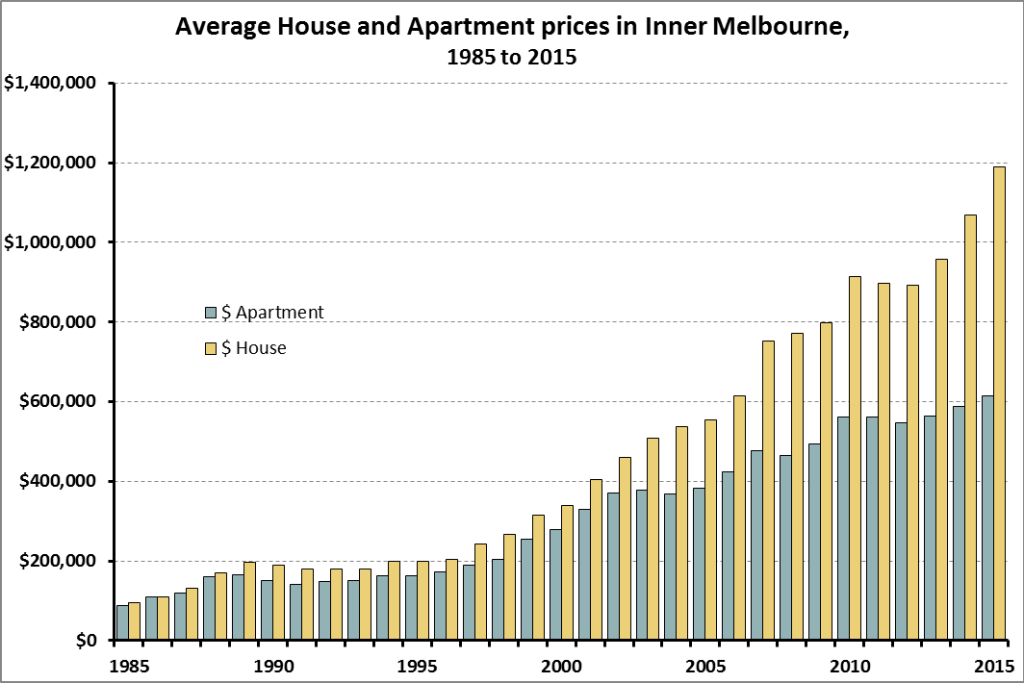Is it time to check our (housing) privilege?

1.
The Australian real estate market is off the charts. International comparisons recently published by The Economist confirmed Australia and New Zealand’s housing costs outpaced Europe and North America over the past few decades.
Fortunately for most of us, there are simple solutions which Australia is well placed to take advantage of.
2. Banana republic
When Cyclone Larry hit the Australian shores in 2006 it sent bananas sky high. As the winds decimated the plantations prices increased 600%; from around $2 to $12 a kilo in a matter of weeks. Cyclone Yasi repeated this feat five years later, reaching prices of $15 a kilo.
I love banana smoothies as much as the next guy, so I have rather unpleasant memories of 2006 and 2011. Not a single banana smoothie or pancake in sight, as we all avoided prices akin to today’s smashed avocados.
I, like many of my fellow sufferers, turned to foreign cook books in search of alternatives. I experimented with mango lassis and opened my heart and mouth to strawberry crepes. And while I often dreamt of cavendish fields and lady finger delights, the alternatives had benefits too.
The following years’ harvests were back to normal, and so were the prices. Banana smoothies regained their place upon the thick-drink throne, but I also continued to indulge on the occasional lassi and added crepes to my repertoire.
3. How about them apples
The House-Price Index (HPI) used for comparisons such as The Economist’s includes houses, apartments and other dwelling types. To measure inflation accurately the HPI mirrors the ratio of dwelling types found in the local housing stock. Across the EU roughly 42% of people live in apartments. In Canada and the US the figure is 25% and 21% respectively. Australia, on the other hand, only houses 10% of people in apartments.

One could argue that Europe is structurally different to Australia, with ancient cities and smaller landmasses. But Canada and the US are both quite similar to Australia when it comes to land mass, age and culture. Yet, Australia’s housing stock is half as likely to include smaller units. When you consider that another 6% of Americans (on top of the 21% in units) live in small dwellings such as mobile homes, caravans, etc, Australian’s propensity for houses seems even more like an outlier.
While Ireland and the UK have similar housing ratios to Australia, the majority of them live in “semi-detached” houses, meaning they share at least a wall with their neighbours (terrace and row housing). 90% of Australians, on the other hand, live in fully detached homes; back-yards, front-yards, side-yards. This type of housing has much larger land lots.
Over the past few decades, Australian house prices increased roughly 20% faster than apartment prices. This difference is more pronounced in sought-after areas such as the inner city suburbs where land is at a premium. Due to the compounding effect over a 30 year stretch, this difference in speed means that houses in Stonnington went up 13 times but apartments only increased 7 times.

4. A home among the gumtrees
Such is Australians’ addiction to land (or disdain for apartments) that people choose to live an hour away from the CBD than being stuck in an apartment. In 2015, the average price for a house in Nillumbik Shire was $50k to $70k more than the average apartment in City of Yarra or Melbourne Council ($696k vs $640k and $624k). Nillumbik is roughly 40km from Melbourne’s CBD, and around an hour by train. Similarly, houses in Knox and Maroondah Shires (about 30 kms east of the CBD and 1 hour by public transport) are $80k more on average than the apartments in City of Yarra, and about $50k more than in Port Phillip($682k). Port Phillip is not only just a few kms from town, it’s also on the beach.
The average price of an apartment in the blue LGAs (as depicted in the map below) is cheaper than the average house price in the red LGAs. Houses in the yellow LGAs are cheaper still.
This phenomenon is not limited to big families and households. According to the 2011 Census, only 30% of lone person households in Melbourne lived in apartments, and 17% of 2 person households. Australia wide, only 26% of 1 person households and 14% of 2-person households live in apartments.
5. Compare the pear
Of course these comparisons are a bit strange. Suburban homes have more rooms than inner city apartments. They have yards and land; all good things for some. On the other hand, apartments are close to employment, cultural and retail opportunities, not to mention public and social goods, such as hospitals, public transport, etc, etc. And while the majority of people seem to choose houses, apartments make fine homes too; 42% of Europeans seem to cope.
As the house price index mirrors the local housing stock, the Australian HPI is 90% weighted towards houses. This pretty much hides the lower speed at which apartments increase.
But potentially more importantly, the difference between house prices and apartment prices may be inflated due to houses making better investments. If people bought houses purely for their liveability and not with an eye to their resale value, then perhaps the difference in price would be smaller. Perhaps some of the Australian “housing affordability issue” can be put down to being an “investment affordability issue”.
Some might say that apartments are not the Australian way. Many have fond childhood memories of backyard cricket and jumping over sprinklers to keep cool in summer. However, cities like Melbourne have tripled their population since the 50s, and doubled since the 70s. As the population increases houses need to be built further and further away from city centres in order to stay affordable. This is clearly the current thinking as the Victorian Government recently announced the rezoning of 17 new suburbs to house 100,000 new houses. This would all be fine, except that we’re encouraging people to live roughly 40kms out of town.
Apartments, instead, can already be built cheaply within a 15km radius of the CBD.
6. Mango or papaya?
Comparison is a cruel mistress. Australians feel hard done by when comparing certain aspects of their lives to a place which no longer exists in time and space (1960s Melbourne), but they fail to recognise their relative comfort in comparison to pretty much everyone else in the world today.
Apartment living is not for those who can’t afford a house. It’s for those who have different preferences, like valuing commute time over backyards. And when our tastes and preferences become out of reach, it might be worth opening our minds to other possibilities, consulting foreign cookbooks and considering other fruits.
7. #notallfruits
The term “housing affordability crisis” in this post refers to the current focus on “young Australians’ inability to break into the market“, or that “housing is out of reach of the average Australian“.
It does not discuss the issue of un-affordable rental markets and people struggling to secure a safe roof on an everyday basis.
Rental affordability is a completely different issue and using the same term to discuss both problems is somewhat problematic.
I discuss the rental aspect of housing affordability in these previous posts: Those who can’t afford, rent; and Rental struggles
_____________________________
Sources
- All Melbourne house and apartment price info from: http://www.dtpli.vic.gov.au/property-and-land-titles/property-information/property-prices (Statistics (XLS 1.2 MB))
- Population distribution by dwelling structure: European countries, America, Canada, NZ, and Australia
- Cyclone information – https://www1.ncdc.noaa.gov/pub/data/cmb/bams-sotc/climate-assessment-2006.pdf
- Front graphic by LioPutra
















